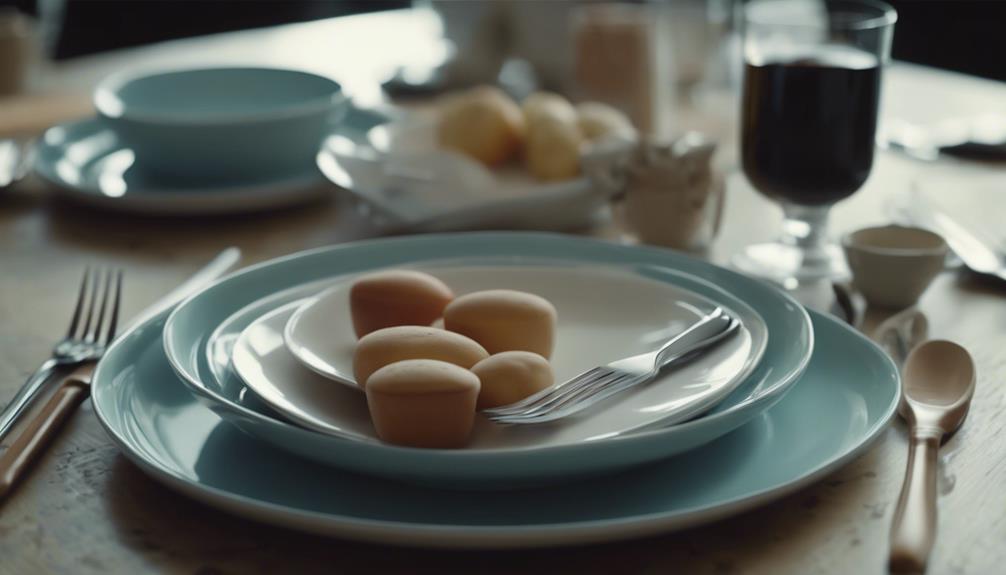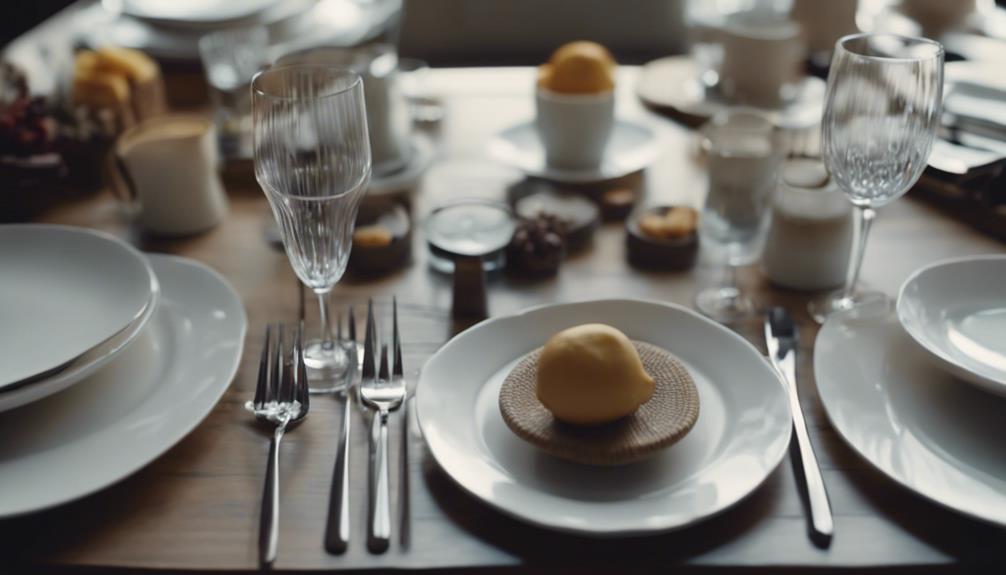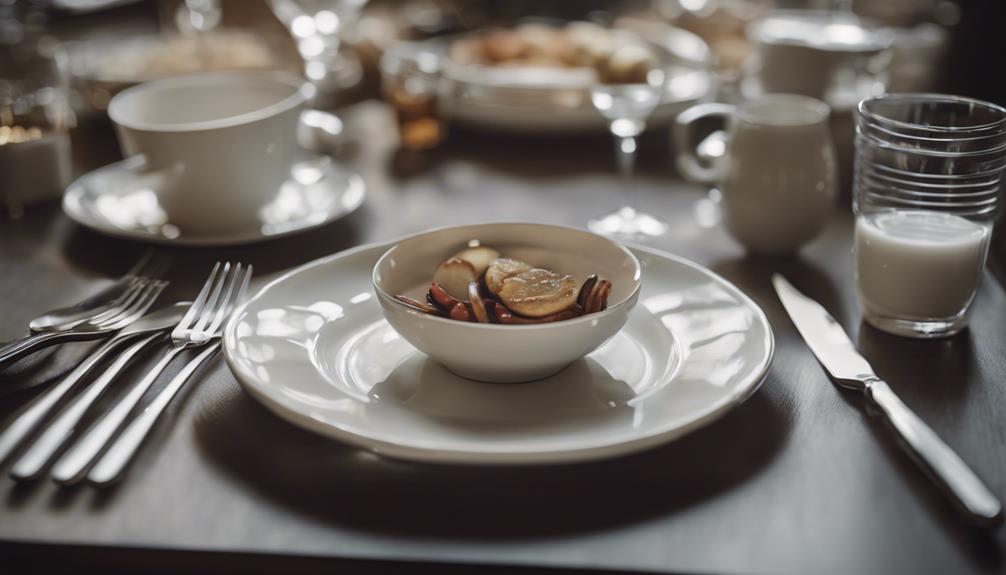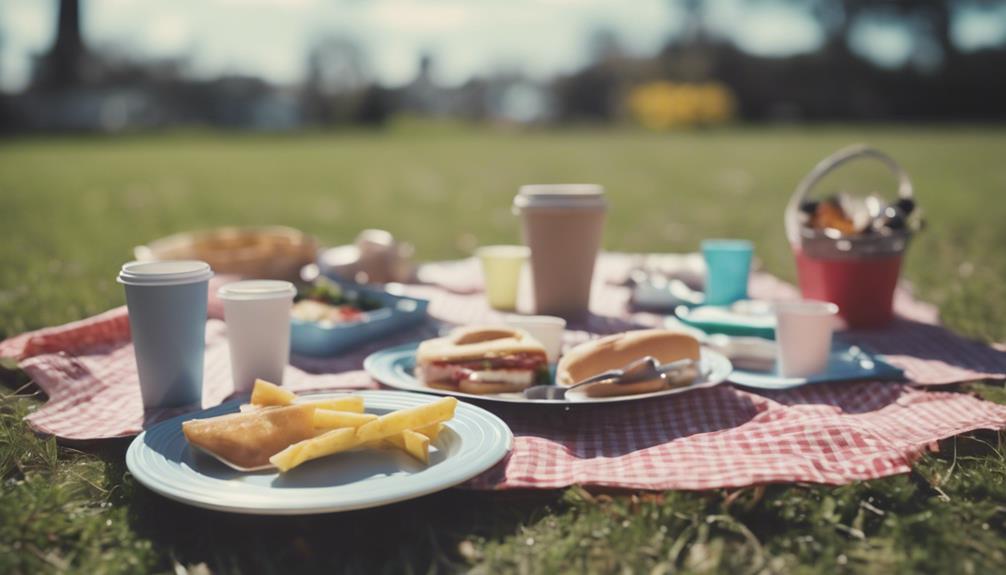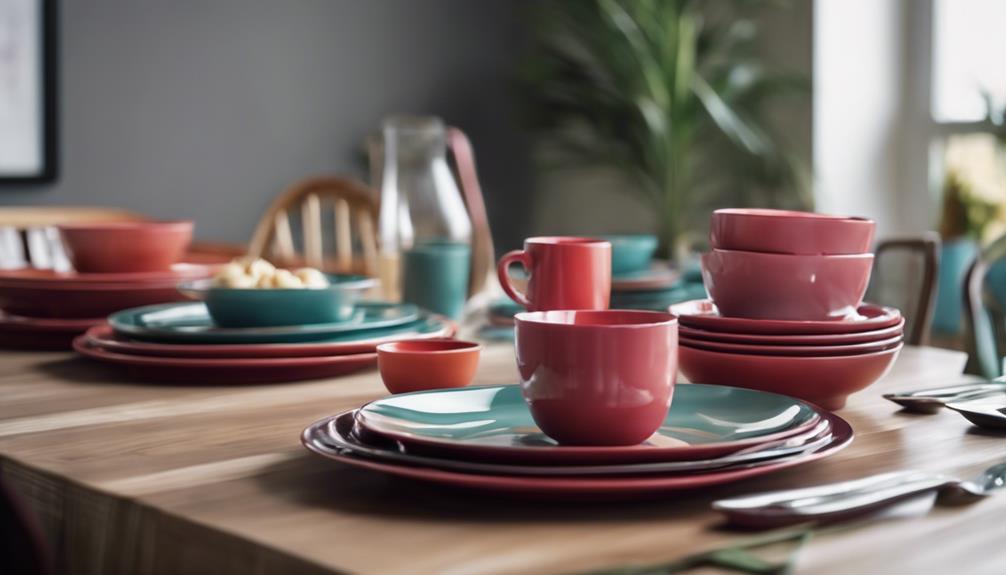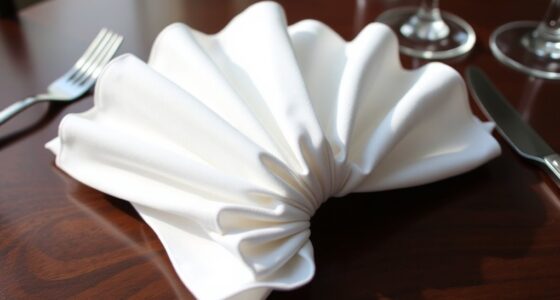Tableware can be classified as both countable and uncountable. When referring to individual items such as plates, glasses, and cutlery, they are considered countable because you can specify the number of pieces. In contrast, when discussing materials and general categories of utensils, tableware is considered uncountable. Factors such as material, cleaning methods, and storage solutions all play a role in the care and maintenance of tableware. By choosing the right tableware, you can enhance dining experiences and create a cohesive look. By understanding both the countable and uncountable aspects of tableware, you can appreciate how each piece contributes to both functionality and aesthetics.
Key Takeaways
- Tableware can be both countable and uncountable based on the context and specificity of the items.
- Countable forms refer to individual pieces like plates and glasses, while uncountable refers to broader categories like dishes.
- Specific instances such as dinner plates are countable, while materials like ceramics fall under uncountable tableware.
- Countable tableware includes distinct types like utensils, glasses, and plates for serving meals.
- Uncountable tableware encompasses materials such as glassware, ceramics, and stainless steel used for dining purposes.
Definition of Tableware
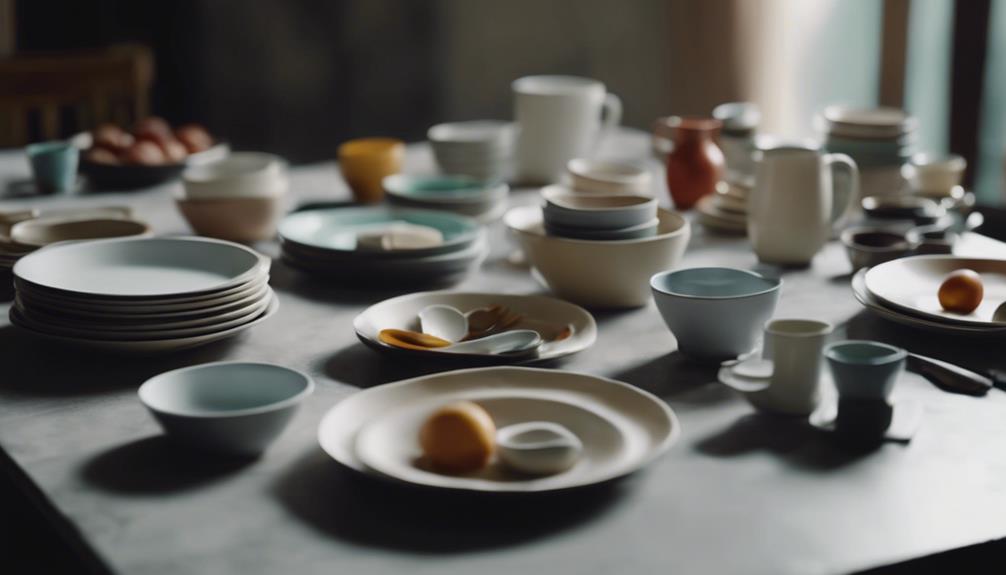
Tableware consists of essential items like plates, glasses, and flatware used for serving meals. These objects aren't only important but also play a vital role in how your meals are presented. For a unified and polished appearance, many recommend using matching sets of tableware, such as coordinated plates and bowls. It's vital to keep your tableware clean to guarantee the hygienic and aesthetic serving of food and beverages. Dishwashers are highly effective tools for maintaining the cleanliness and hygiene of your tableware items.
When setting the table for a meal, you'll find that having the right tableware can enhance the dining experience. From the plates that hold your food to the glasses that hold your drinks, each piece contributes to the overall presentation and enjoyment of the meal. By investing in quality tableware and keeping it clean, you can elevate your dining occasions and leave a lasting impression on your guests.
Countable Forms of Tableware
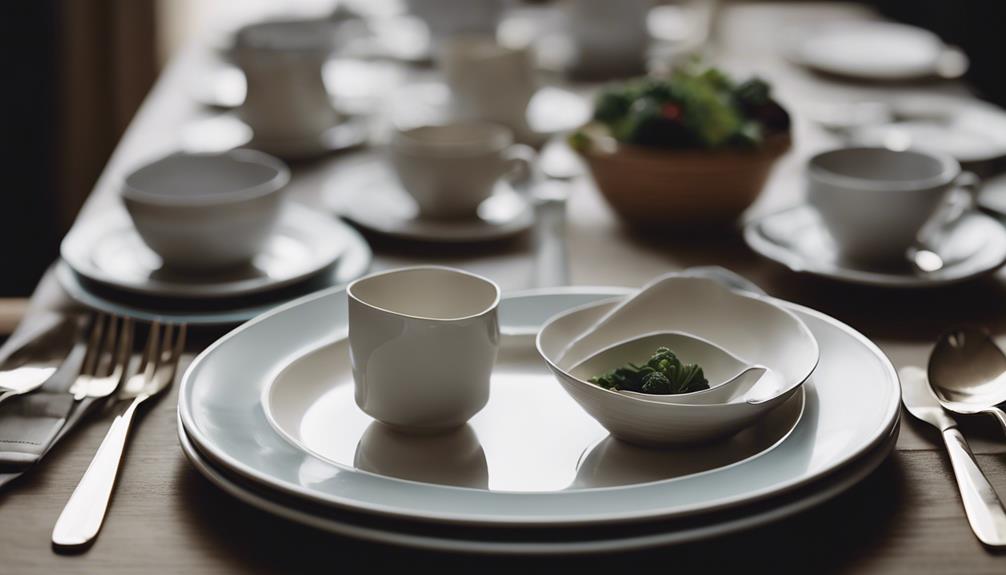
When setting your dinner table, you'll notice that individual items like plates, glasses, and cutlery can be counted as distinct pieces of tableware. Each plate, glass, or utensil contributes to the overall table setting.
In the context of countable tableware, you can refer to specific instances or types of tableware items. For example, you might say, 'Please pass me a plate,' indicating a single piece of tableware. Similarly, when hosting a dinner party, you could mention, 'We need more glasses,' highlighting the countable nature of these items.
Understanding the countable forms of tableware is essential for clear communication and precise descriptions. By using the plural forms of tableware items like dishes, glasses, and silverware, you can effectively convey the number or variety of tableware pieces needed for a particular occasion.
Next time you set the table, take note of how each piece of tableware plays a role in creating a cohesive and functional dining experience.
Uncountable Use of Tableware
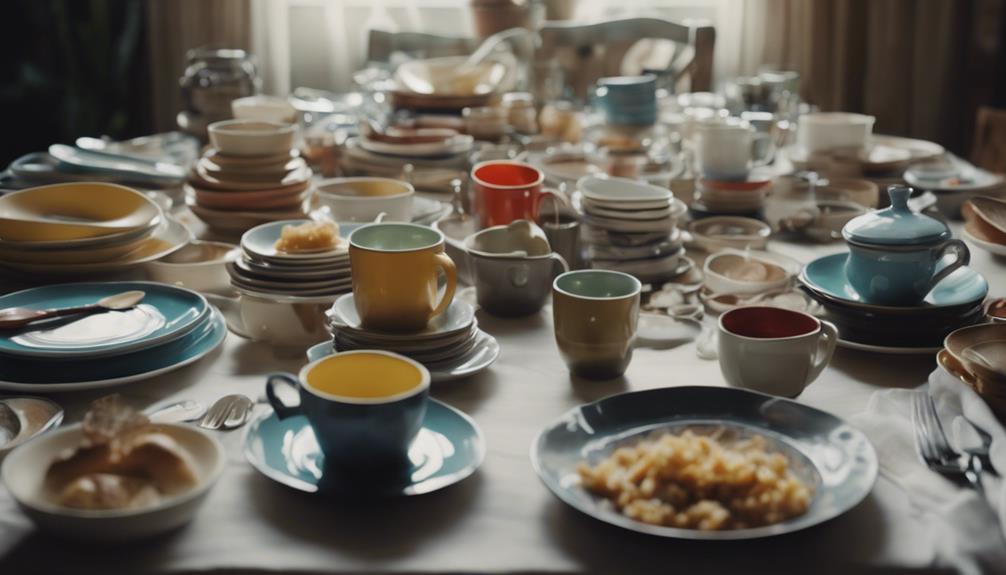
When it comes to the uncountable use of tableware, several key factors need consideration:
- The material of your tableware greatly impacts its care and maintenance routines.
- Proper cleaning methods are crucial for preserving the lifespan and quality of your tableware.
- Efficient storage solutions play a vital role in keeping your tableware organized and easily accessible for dining needs.
Material of Tableware
Consider the diverse materials that comprise the uncountable category of tableware used in dining experiences. Tableware, as a material, is treated as a collective noun without a specific count, emphasizing the overall category of items like dishes, glasses, and silverware. Examples of tableware as an uncountable material include ceramics, glassware, stainless steel, wood, and plastic.
Understanding tableware in this way helps recognize it as a broad category of dining items rather than individual pieces. Each material brings its unique characteristics, from the elegance of glassware to the durability of stainless steel. These materials offer a range of options for different dining preferences and occasions, contributing to the overall dining experience.
Cleaning Tableware Properly
To guarantee proper hygiene standards, cleaning tableware correctly is essential. Using the right cleaning products is vital to eliminate bacteria and germs effectively.
Handwashing delicate tableware can prevent damage that might occur in dishwashers, ensuring their longevity. Before cleaning, inspecting tableware for any chips or cracks is important to prevent contamination during use.
Proper storage of clean tableware is also necessary to avoid breakage and maintain its quality for longer periods. By following these steps diligently, you can make sure that your tableware remains safe for use and in excellent condition, ready to serve your meals with peace of mind.
Storing Tableware Efficiently
Properly storing tableware is essential for maintaining its quality and ensuring longevity. Efficient organization not only prevents damage but also saves space and makes accessing items easier when needed.
Stackable or nesting tableware sets are excellent for maximizing storage in cabinets or drawers. Using protective dividers or padding can safeguard delicate pieces from scratches or chips.
By creating designated storage areas for different types of tableware, meal preparation and serving processes can be streamlined. Remember, the way you store your tableware can greatly impact its lifespan and functionality.
Take the time to organize and protect your pieces properly to enjoy them for years to come.
Examples of Countable Tableware
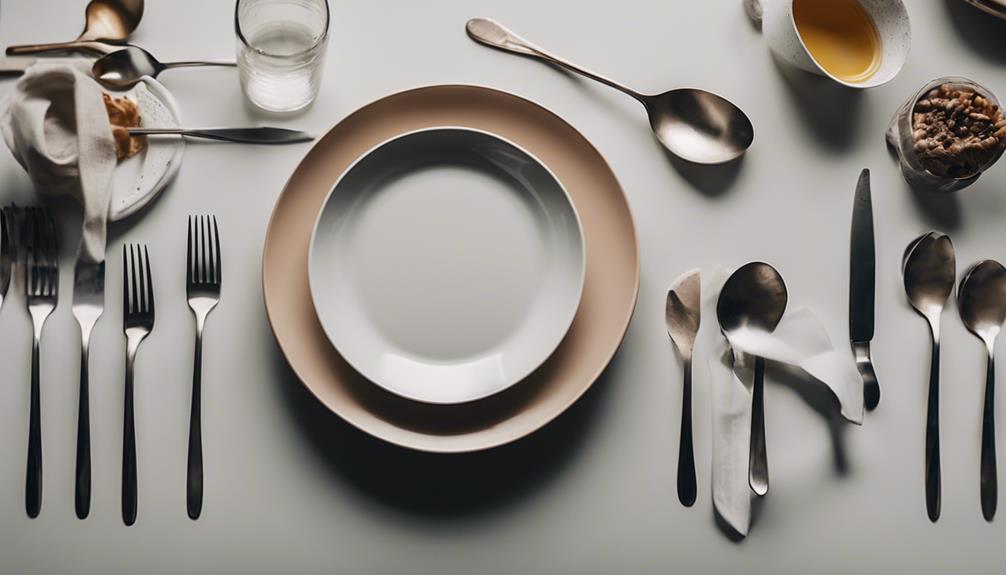
Countable tableware encompasses individual pieces like plates, glasses, and utensils. These items can be counted and quantified, enabling easy tracking of inventory.
Specific types, such as soup bowls or salad plates, fall under the category of countable tableware.
Countable Tableware Types
When setting the table for a meal, don't forget the essential important tableware types like dinner plates, salad plates, and utensils. These items play a vital role in serving and enjoying your meals. Here are some common important tableware types:
| Type | Description | Example |
|---|---|---|
| Dinner Plates | Used for main courses | 10.5' white plate |
| Salad Plates | Smaller plates for salads | 8' round plate |
| Soup Bowls | Bowls for soups and stews | 12 oz. bowl |
Having the right important tableware ensures a well-prepared table setting for any dining occasion. Each piece serves a specific purpose, adding both functionality and aesthetic appeal to your meals.
Quantifying Tableware Items
To properly set the table for a meal, make sure you have the necessary countable tableware items such as plates, glasses, forks, knives, and spoons. When preparing for a meal, having the right tableware is vital to guarantee a pleasant dining experience.
Here are some examples of countable tableware items:
- Plates: Essential for serving main courses and appetizers.
- Glasses: Used for serving beverages like water, juice, or wine.
- Forks, Knives, and Spoons: Utensils for enjoying your meal with ease.
Having these countable tableware items on hand won't only make your table look inviting but also help you enjoy your dining experience to the fullest.
Counting Tableware Pieces
To guarantee your table is properly set for a meal, understanding how to count tableware pieces like plates, glasses, forks, knives, and spoons is fundamental. Countable tableware pieces are essential for organizing your dining essentials. When setting a table, you can easily count individual items such as dinner plates or wine glasses to make sure you have everything you need.
Counting tableware is a common practice used for inventorying items or when purchasing new pieces to add to your collection. Knowing which tableware items are countable helps in managing and maintaining your tableware collection efficiently. By being able to quantify your tableware, you can keep track of your inventory and make sure you have the necessary pieces for any dining occasion.
Examples of Uncountable Tableware
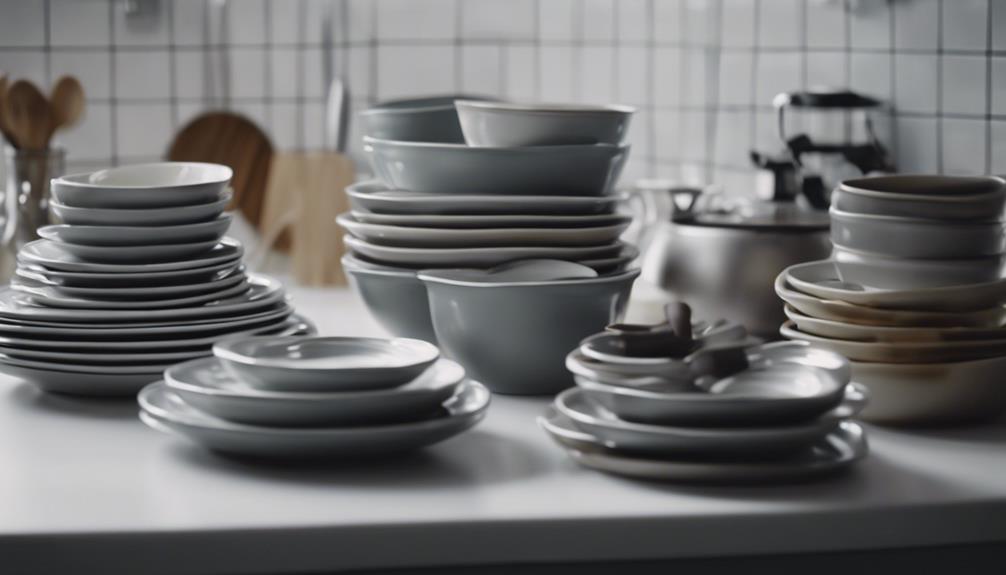
Uncountable tableware, such as dishes, glasses, and silverware, embodies the essential dining implements used in various settings. These items are considered uncountable when referred to collectively, representing the broad categories of utensils needed for dining.
Here are some examples of uncountable tableware:
- Dishes: This category includes plates, bowls, and serving platters essential for serving and enjoying meals.
- Glasses: From water glasses to wine goblets, this encompasses the vessels used for various beverages during dining.
- Silverware: Forks, knives, and spoons fall under this category, serving as the primary tools for consuming food.
Understanding these examples as uncountable tableware helps in grasping the overall concept of dining utensils and their significance in meal settings. By recognizing these items collectively, one can appreciate their role in enhancing the dining experience.
Contextual Considerations for Tableware

Considering the diverse cultural practices and etiquette norms around dining, contextual considerations for tableware play an important role in enhancing the overall dining experience. Different cuisines and dining styles may require specific tableware to fully appreciate the meal. For example, sushi is traditionally eaten with chopsticks on small plates, while Italian pasta dishes are often served in large bowls with forks. Understanding these nuances can show respect for the cuisine and enhance your dining experience.
Moreover, the material of the tableware can also impact the context of its usage. Fine china and silverware are typically reserved for formal dining occasions, adding an air of elegance to the meal. On the other hand, casual gatherings may call for sturdy, everyday dishes that can withstand everyday use. By matching the tableware to the occasion, you can create a harmonious dining atmosphere that complements the food being served. Paying attention to these contextual considerations can elevate your dining experience and show thoughtfulness towards your guests.
Conclusion: Tableware's Countability
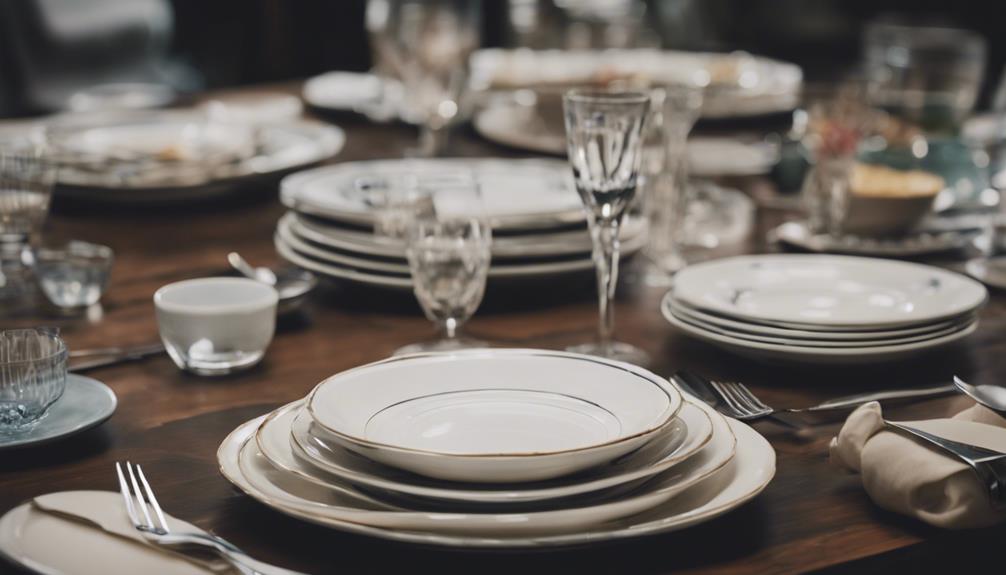
In understanding the nuances of tableware, it's important to recognize the dual nature of its countability in English grammar. Tableware can be both countable and uncountable, depending on the context in which it's used. Here are three key points to take into account regarding the countability of tableware:
- Countable Aspects: When discussing specific pieces or sets of tableware items, the countable nature of tableware comes into play. This allows for precise communication about different categories or individual items within the broader tableware domain.
- Plural Form Usage: In the plural form, 'tablewares,' tableware is commonly used to refer to collections or various types of tableware. This plural form is widely accepted and understood in general contexts.
- Communication Clarity: Understanding the countability of tableware is essential for clear communication. It enables individuals to discuss tableware in a detailed and specific manner, facilitating effective conversations about different aspects of tableware.
Frequently Asked Questions
Is Dishes Countable or Uncountable?
In English, 'dishes' can be both countable and uncountable. When talking about types or a specific number, it's countable (e.g., 'I washed five dishes'). In general terms like 'doing the dishes,' it's uncountable (e.g., 'I need to do the dishes').
Countable usage focuses on individual items, while uncountable refers to a collective concept. Understanding the context helps determine if 'dishes' is countable or uncountable in a sentence.
Is Tableware One Word or Two?
When referring to various dining items like plates, glasses, and silverware, 'tableware' is typically seen as a single term. It's a common term used to cover all dining utensils and accessories.
While 'tableware' is mostly observed in its singular form, it can also be used in its plural form as 'tablewares' in specific contexts. Whether one word or two, 'tableware' represents a wide-ranging collection of items used for dining and serving food.
What Is the Meaning of Tablewares?
When referring to 'tablewares,' you're actually talking about a range or set of tableware items. It's like having a whole team of pieces ready to enhance your dining experience.
From elegant designs by Jean Luce to unique styles by Wilhelm Wagenfeld, each piece contributes to the art and history of tableware.
Is Plate Countable or Uncountable?
When you think about the term 'plate,' it can be both countable and uncountable. In specific cases, like needing a certain number for a meal, it's countable.
On the other hand, when talking about plates in a general sense, like setting a table, it becomes uncountable. So, depending on how you're using it, plate can go either way in English!
Conclusion
To sum up, tableware can be both countable and uncountable depending on the context. While individual pieces like plates and cups are countable, the concept of tableware as a whole is often seen as uncountable.
So, next time you're setting the table, remember that the possibilities for tableware are as endless as the number of stars in the sky!
